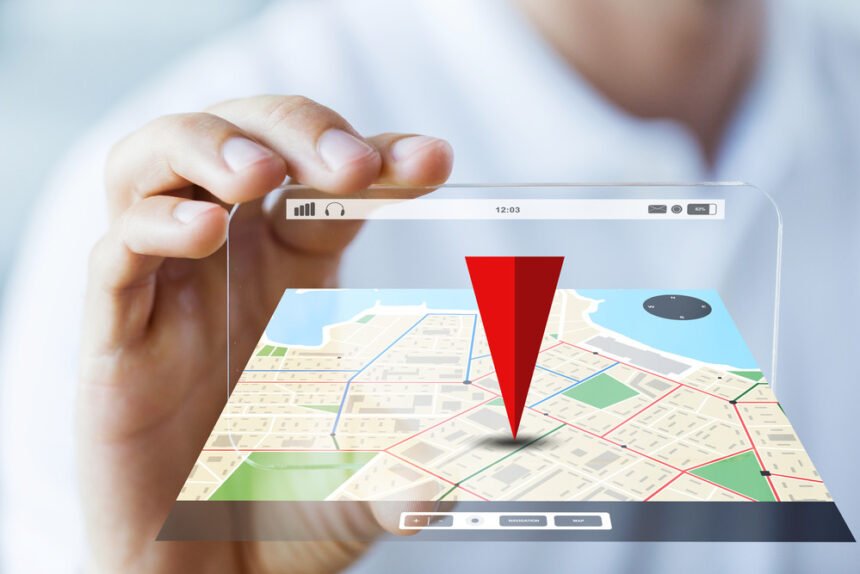The IoT is becoming increasingly commercialized. IDC estimates that there will be 41.6 billion IoT devices online by 2025. As the IoT continues to expand, companies across the world are looking for new ways to embrace its potential.
One of the most overlooked benefits of the IoT is with indoor mapping. Companies can find a number of useful IoT approaches to achieve this goal.
Indoor Mapping is Simplified with IoT Advances
Last year, IoT expert Sameer Srivastava published an article on the use of IoT devices for indoor positioning. He succinctly points out that IoT devices can be used to pinpoint the placement of various assets, which ensures that they are properly accounted for.
IoT solutions like Mappedin are very helpful. There are many ways that commercial spaces like office buildings and shopping centers can benefit from 3D and interactive indoor mapping software by Mappedin or other similar companies. Indoor mapping has the potential to improve customer service, tenant retention, and make the overall daily lives of people using the buildings much easier.
Here we look at 4 unique ways that commercial spaces can benefit from IoT-based indoor mapping software:
1. Traffic Flow
Modern indoor mapping systems are more complex than mere maps – this integrated software uses a wide variety of IoT technologies to track data and the behavior of people inside the building.
Using technology like IoT, computer vision, Wi-Fi, infrared and special sensors allows companies to better understand how exactly people inside a building use it. Using this information, it’s possible to map out the different hallways, rooms, and doorways of a building, getting an accurate depiction of foot traffic flow.
With the data extracted from IoT mapping devices, it’s possible to design renovations and new building layouts that improve the flow of people according to how the building is actually used.
This is the kind of thing that architects can’t always anticipate when designing a building, so it’s good to make changes based on real data. More architects are going to use IoT devices in the near future to optimize their designs.
2. Maintenance
Indoor mapping software can make it easier for maintenance crews to find the places they need to go and plan their route to their destinations more effectively. This is arguably the biggest benefit of using the IoT for this purpose.
Maintenance crews often don’t know their way around a building, especially if they rarely visit it, so indoor mapping software can speed up the time it takes to get issues repaired as the crew has an efficient and accurate route to the exact location of the problem.
The software can also be used to store statistical reports about issues from the maintenance crews, helping tenants and owners to remain on track with the latest data.
3. Customer Service
The rapidly evolving IoT is getting better at understanding customers. This is making it easier to conduct customer service tasks more effectively.
If you’re running somewhere like a shopping mall, one of the most obvious benefits to indoor mapping is the improved customer service for shoppers.
Rather than looking for a mall employee or going into a store to ask for directions, shoppers can simply use interactive 3D indoor mapping screens to help them find the most efficient route to their favorite store.
This technology also allows them to browse the directory of stores, helping them to find the exact premises they want without wasting time. They might even notice stores in the directory they want to try which they wouldn’t have passed and notice otherwise.
As well as improving the shopping experience, this software also reduces the amount of time people are lost or confused about where to go, thereby improving foot traffic flow and reducing problems with bottlenecks when people get lost in the mall.
It’s a better experience for customers all around, whether they’re using the software or not.
4. Tenant Updates
Whatever kind of commercial premises you’re running, it’s a good idea to keep your tenants up to speed with the latest developments. This includes information about other tenants that could be useful to them now or down the line.
Mapping software can include tenant data such as renovation information, lease updates, route information, loading dock data, emergency station locations, parking locations and more.
Keeping your tenants updated on the latest information and best practices for your facility is a surefire way to reduce complaints, improve retention, and provide a better overall service for your clients.
These are just some of the ways that commercial spaces can benefit from indoor mapping technology. Whether it’s traffic flow or improving customer service, be sure to harness these benefits and give your premises the edge over the competition.
The IoT Leads to Impressive Advances in Indoor Mapping
The IoT has brought a number of benefits for companies across the globe. A growing number of companies are using IoT networks to improve indoor mapping. This is going to increase their ROI tremendously.

